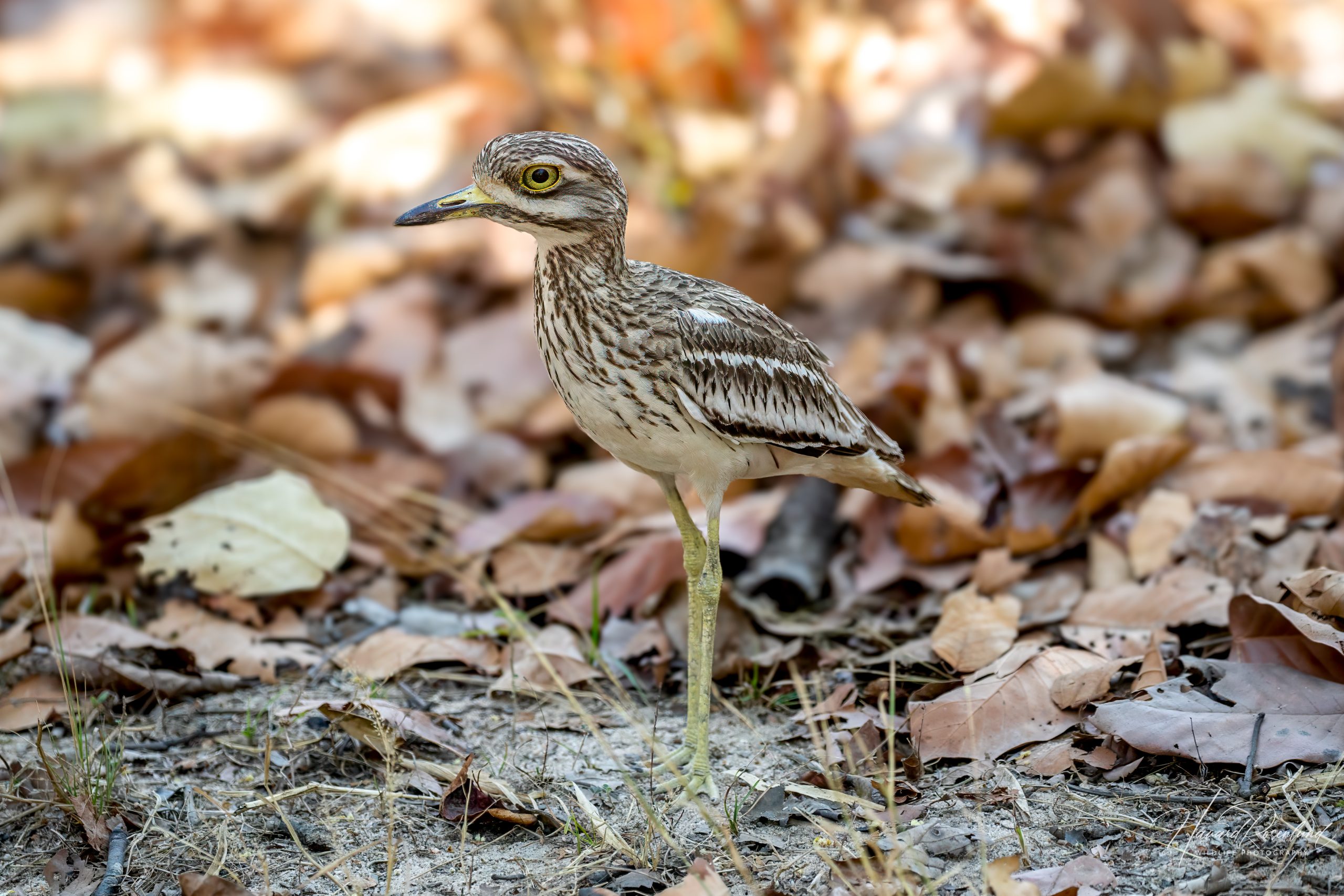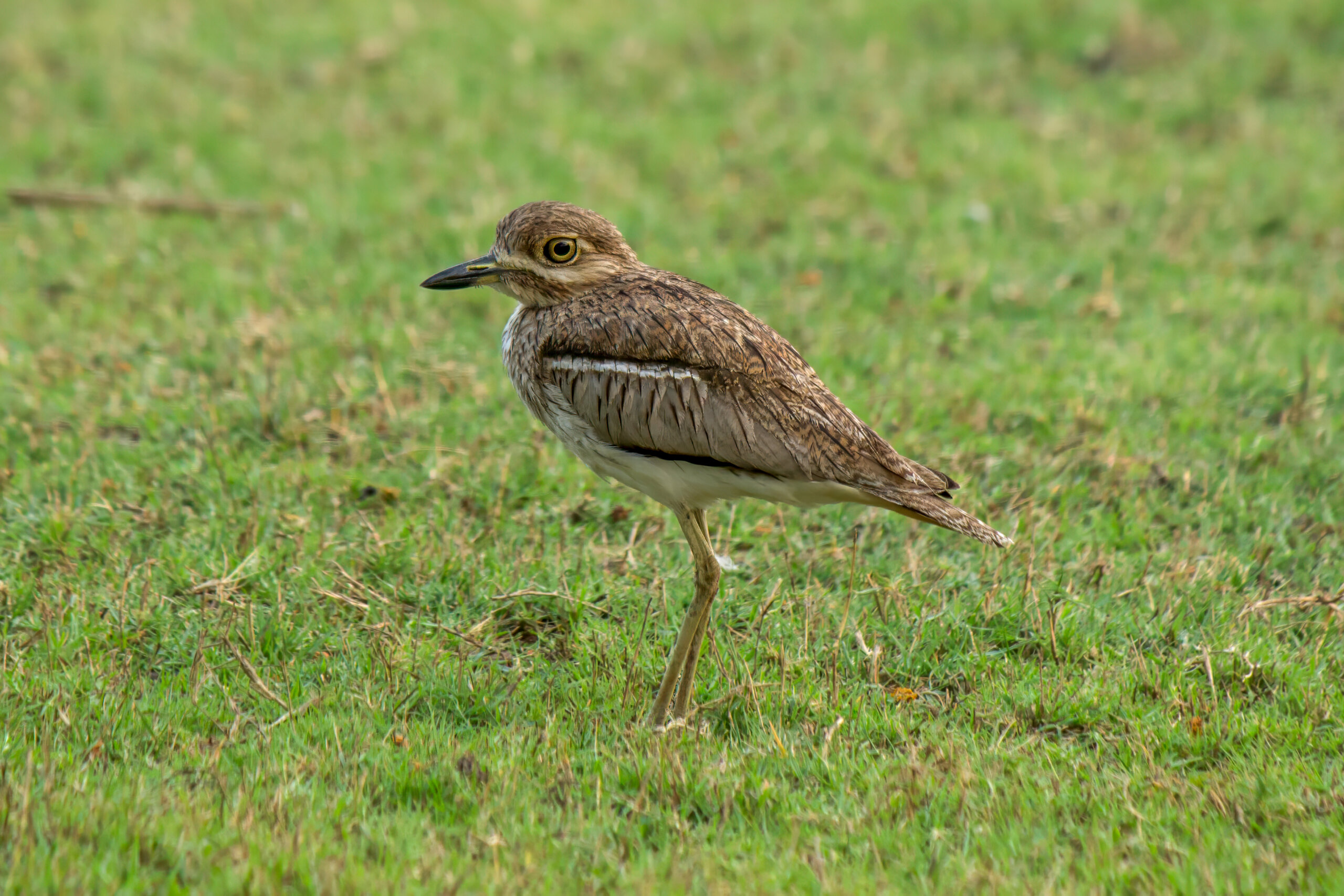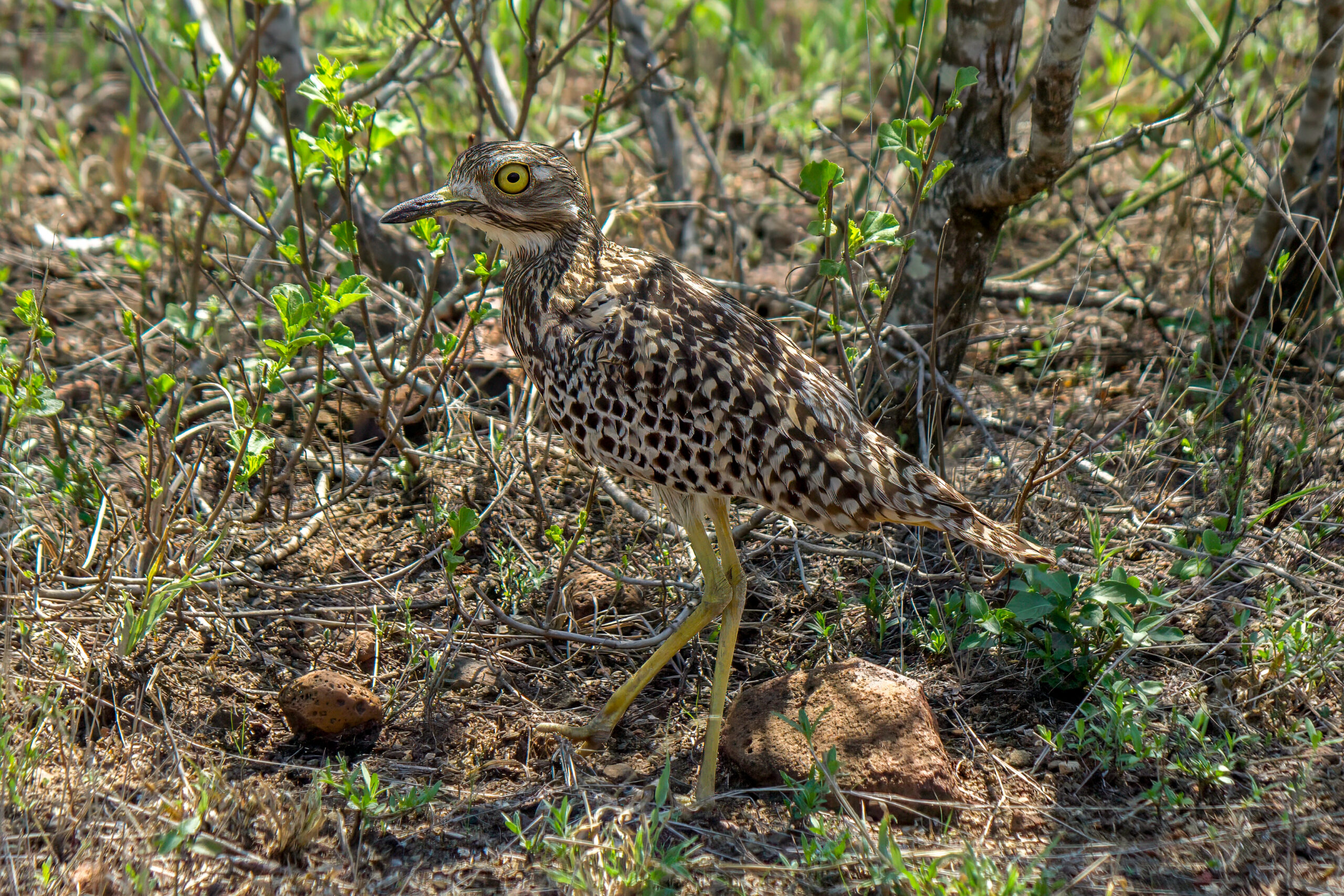Description
The Indian thick-knee (Burhinus indicus), also known as the Indian stone-curlew, is a nocturnal bird native to the Indian subcontinent and Southeast Asia. This bird is characterized by its large, pale-yellow eyes adapted for night vision, a prominent yellow bill, and strong yellow legs. The Indian thick-knee typically measures 40-45 cm (16-18 inches) in length with a wingspan of about 80-88 cm (31-35 inches). It has a light brown plumage with darker streaks on its back and wings, providing excellent camouflage against the sandy and rocky terrains of its habitat. It is similar to the Eurasian thick-knee (Burhinus oedicnemus), but the Indian thick-knee has darker plumage, larger bill, and a slightly smaller size.
Diet & habitat
The Indian thick-knee thrives in a variety of habitats, including dry grasslands, open scrublands, rocky terrains, and cultivated fields. It is often found near water bodies such as rivers and lakes, which provide ample feeding opportunities.
An opportunistic feeder, this bird’s diet mainly consists of insects, small reptiles, and amphibians. Beetles, grasshoppers, and termites form the bulk of its insect prey. It is also known to occasionally feed on seeds and berries. The Indian thick-knee typically forages at night, using its keen eyesight to detect prey in low light. It hunts by walking slowly and then making rapid lunges to capture its prey, employing a combination of stealth and speed.
Nesting
The breeding season of the Indian thick-knee varies with location but generally occurs from March to August, coinciding with the monsoon season. During this period, the male performs elaborate courtship displays, including loud, whistling calls and wing-flapping to attract a mate.
The species is monogamous, and pairs form long-term bonds. The nest is a simple scrape on the ground, often in open areas with sparse vegetation, providing a clear view of approaching predators. The female typically lays 2 to 3 eggs, which are pale and cryptically colored to blend with the surroundings. Both parents share incubation duties, which last for about 24-26 days. After hatching, the chicks are precocial and leave the nest soon after. They are capable of running and foraging within a few days but remain under parental care for several weeks until they can fly and fend for themselves.
Status
The Indian thick-knee is classified as least concern on the IUCN Red List due to its wide distribution and stable population trend. However, it faces threats from habitat destruction and degradation, particularly due to agricultural expansion and urban development. Despite this, the species has shown adaptability to altered landscapes, often inhabiting agricultural fields and even urban areas where suitable conditions exist.








